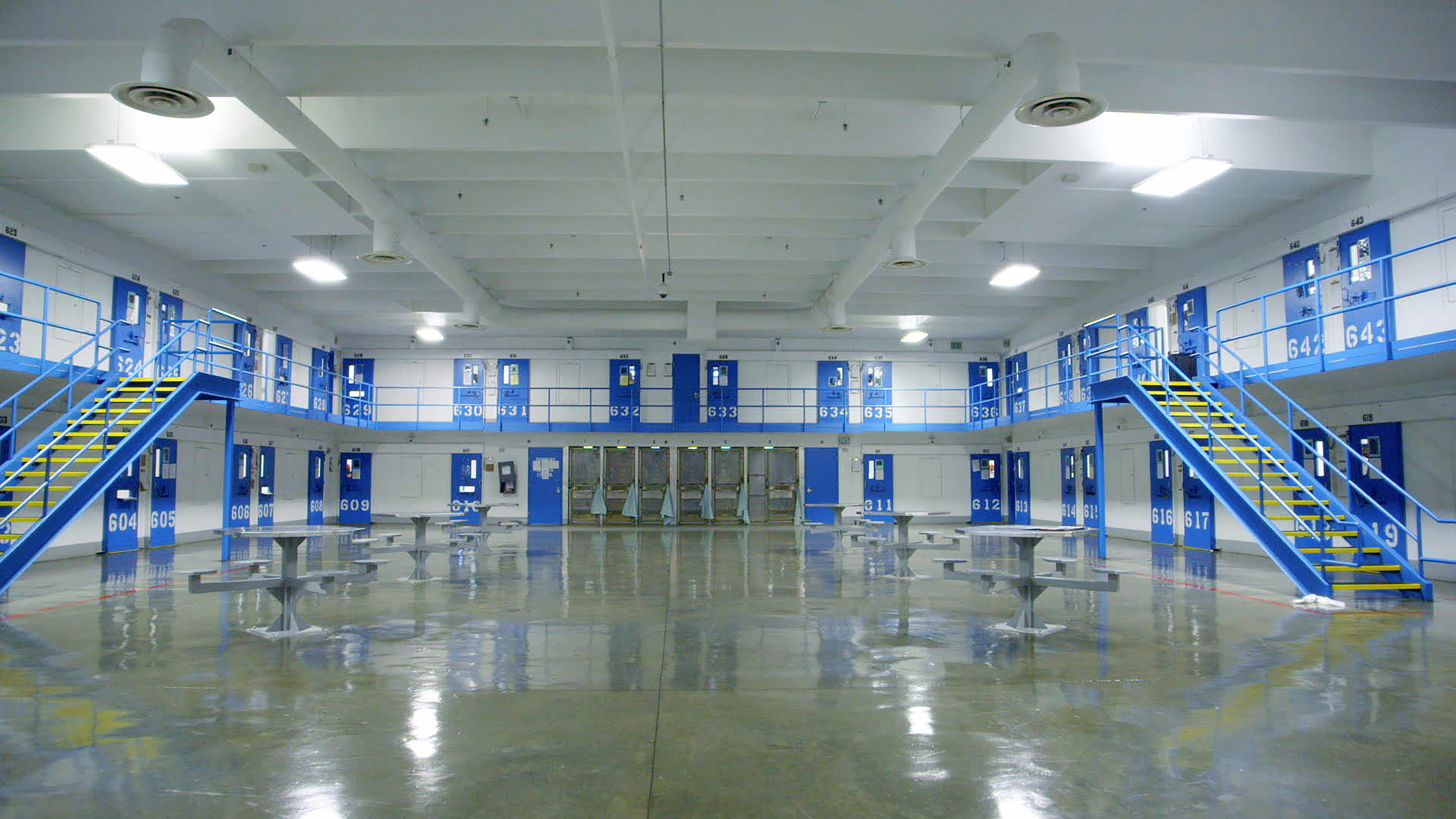
At the end of Kristi Jacobson’s Solitary, a documentary profiling inmates in solitary confinement and the corrections officers at Red Onion State Prison in Virginia, the camera rests on the pale face of a prisoner named Randall, who was sentenced at the age of 20 for shooting a gas station attendant to death during a robbery attempt. In the film’s opening sequence, we learn of his upbringing in a small town outside of Charlottesville: “Grew up dirt-poor, wrong side of the wrong side of the tracks,” he says in a voiceover, as the camera pans over streams and forests of the Albemarle County wilderness before arriving at a concrete intersection framed by worn down bungalow-style homes. “Dad was an alcoholic and a drug user. For the most part, he was absent. I was the middle son”—on screen, a gas station appears, red numbers on a weathered white sign advertising the prices—“so no matter what happened, I always got beat for it.” A car drives down a tree-lined highway off into the distance. “Going to school, we were, by far, the poorest there.” A red brick building materializes behind a group of knotted tree trunks. At “poorest,” we see Randall for the first time, wearing a white flannel shirt, bags under his eyes as he looks off-camera at his interviewer.
We now see Randall handcuffed to a metal table in a white room illuminated by the sickly grey of fluorescent lighting. “Now I’m doing 1,214 years in the state of Virginia without parole. That’s pretty much it,” he says, with a resigned shrug and melancholic half-smile. Later in the film he explains that he had needed the money in order to prevent his grandmother’s stove from being repossessed. He shares that he tolerates solitary confinement by “fantasizing…I create entire landscapes in my mind. Sometimes it’s childhood places that I’ve been, like the woods when I was growing up.” The camera advances through a clearing littered with leaves and sticks. The ache of memory is palpable as we see Randall in his eight-by-ten-foot cell before the film ends with the bang of a metal door.
It’s a gut-wrenching moment, and the gravity of it is a testament to Jacobson’s skills as a director and producer. “I set out to make a film that exposed how widely we use solitary confinement and the extremely detrimental, devastating effect of that, but I didn’t know what that meant until I set foot inside Red Onion and gained the type of access that I gained,” she says. “It was then that the film became much less traditional in terms of our editing style—more about repetition and rhythm and immersion versus using a three-act structure.”
Released in 2016, Solitary marked something of a shift for the New York-born documentarian. “In some ways, I think I truly found my voice in making it. I’m much more comfortable in the gray versus the black and white; I’m much more comfortable pushing people to feel discomfort.” The broader issue confronted by the film is one that has preoccupied Jacobson since her college years at Duke, where she majored in sociology with a focus on criminology and juvenile justice. She first observed the inner workings of the court system through an internship with the Wake County Courthouse Juvenile Court in Raleigh, North Carolina. “I thought I’d pursue law, but I couldn’t get over how visibly broken the system was,” she says, of the juvenile justice system. “Those who are affected know this, and those who are not embroiled in it, needed to understand,” she adds. “It drove me to seek a way to channel my passion for changing it, and filmmaking became the obvious path for me.”
Post-graduation, she moved to New York and eventually landed at Cabin Creek Films, a studio founded by the two-time Academy-Award-winning documentarian Barbara Kopple, who went on to become her mentor and lifelong friend. “It was where I learned everything I know,” explains Jacobson. “She was my education, period.” It was under Kopple’s supervision that Jacobson directed her first feature-length film, American Standoff, which followed the Teamsters Union over two years, beginning with the election of James P. Hoffa (son of renowned labor union leader Jimmy Hoffa), as the organization struggled to maintain power in the early 2000s. Since American Standoff was released in 2002, Jacobson, in addition to racking up more than a dozen producer credits, has directed seven documentaries on a range of topics, from A Place at the Table (2012), which explores food insecurity in the United States, to more personal projects, like Toots (2006), a biopic on her grandfather Toots Shor, a legendary figure of New York nightlife in the 1940s and ’50s. This past December the Discovery Channel debuted her latest short, Take Back the Harbor, which follows students at the Harbor School, a New York City public school focused on environmental science, through their year as they collaborate with the Billion Oyster Project, a “citizen science” initiative dedicated to restoring the once-thriving oyster population of New York Harbor. “Of my independent work, the thing that ties it all together is that at some point someone said ‘This is not possible,’ or ‘You can’t do this! No.’ And so I think the way I choose my subjects is that when people start saying ‘No,’ I start saying ‘Yes.’ So that’s, quite simply, it.”










 in your life?
in your life?

